Last updated on
Discover the key differences between strip and puck lights for under-cabinet lighting. Dive into their unique features, benefits, and ideal applications.
As a home decorator, one of the most important aspects of creating a beautiful and functional space is lighting. When it comes to under-cabinet lighting in the kitchen or bathroom, there are two popular options: strip lights and puck lights.
Both have their pros and cons, but which one is right for your space? In this article, we’ll compare strip lights vs. puck lights for under-cabinet lighting and help you make an informed decision for your next home renovation project.
So grab a cup of coffee and let’s shed some light on this topic!
Key takeaways:
- Strip lights provide even illumination and energy-efficiency.
- Puck lights offer versatility and affordability.
- Strip lights are easier to install, while puck lights offer greater flexibility.
- Strip lights provide wider coverage, while puck lights create focused light.
- Strip lights are more energy-efficient, but puck lights are ideal for specific task lighting.
What's Inside
Introduction to Under-Cabinet Lighting
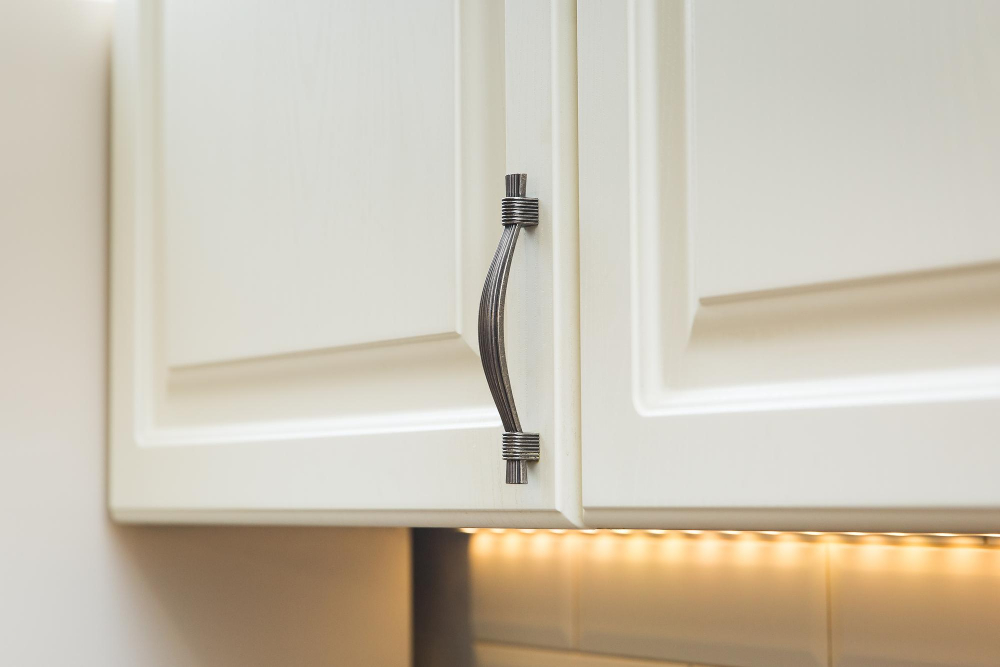
Under-cabinet lighting is a popular choice for homeowners looking to add both functionality and style to their kitchens or bathrooms. It provides task lighting that illuminates the countertop, making it easier to prepare food, read recipes, or apply makeup.
Under-cabinet lights can create ambiance by highlighting decorative backsplashes or accentuating unique features of your space.
There are two main types of under-cabinet lighting: strip lights and puck lights. Strip lights are long and narrow LED light strips that can be mounted directly onto the underside of cabinets with adhesive tape or screws.
Puck lights are small circular fixtures that attach individually underneath cabinets using screws.
Both strip and puck lights come in various sizes, colors (including RGB), brightness levels (lumens), color temperatures (Kelvin), dimming options as well as smart home integration capabilities such as voice control via Alexa/Google Assistant/HomeKit compatibility through Wi-Fi connectivity.
Strip Lights: Overview
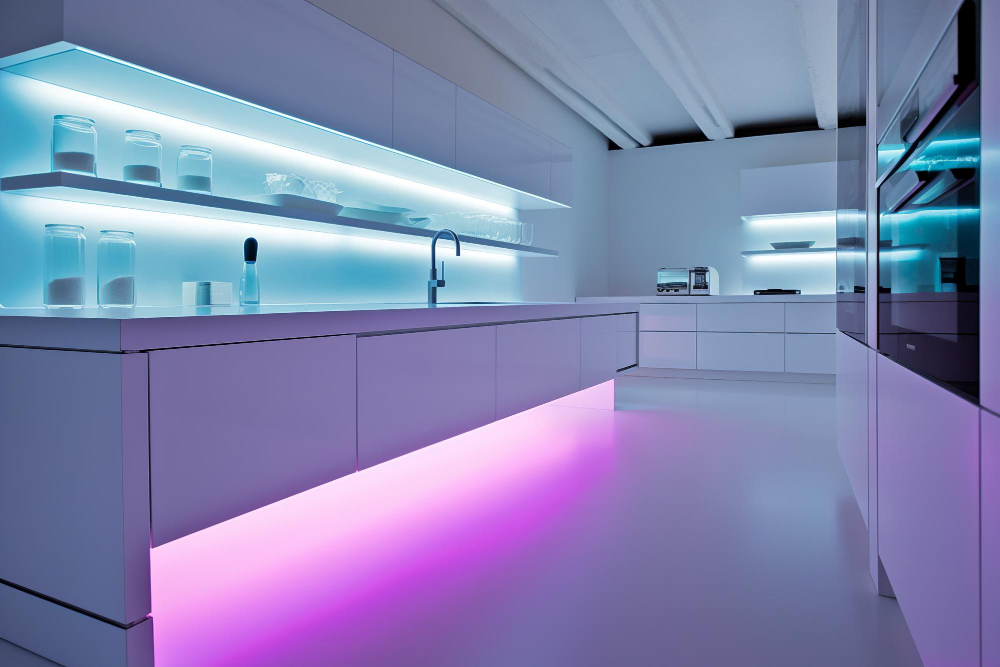
These thin and flexible LED strips can be cut to fit any length or shape needed for your space. They come in various colors and brightness levels, making them ideal for creating different moods in the kitchen or bathroom.
One of the main advantages of strip lights is their ability to provide even illumination across a wide area. This makes them perfect for larger spaces where you need consistent light coverage without any dark spots.
Strip lights are also energy-efficient compared to traditional incandescent bulbs, which means they will save you money on your electricity bill over time.
Another benefit is that strip lights can be dimmed easily with compatible controllers or smart home systems like Alexa or Google Home Assistant. This allows you to adjust the brightness level according to your needs at different times of day.
Puck Lights: Overview
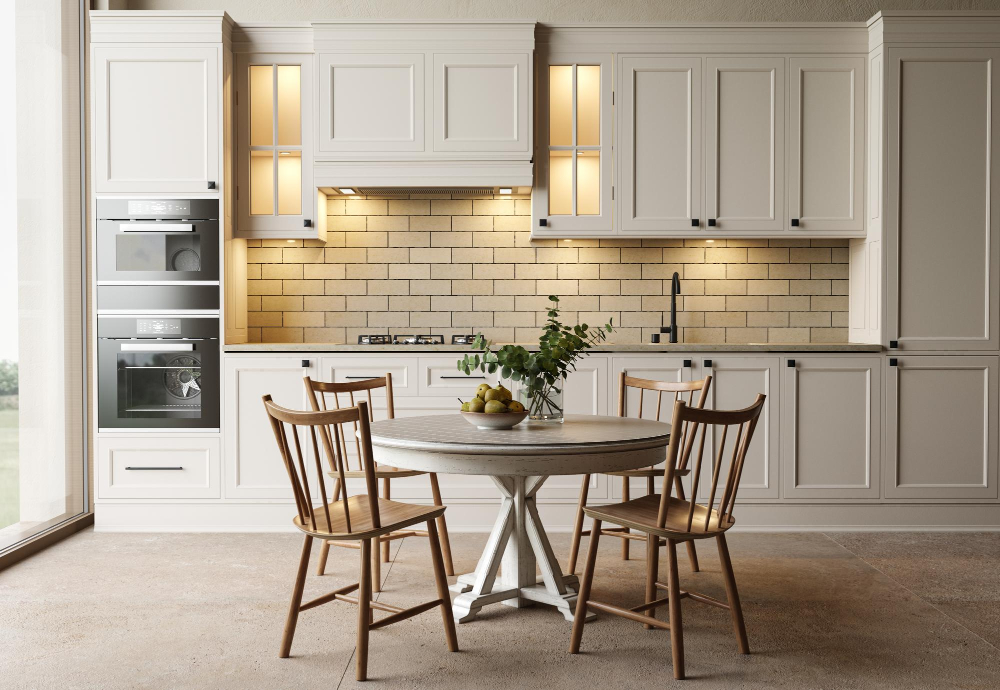
They get their name from their shape, which resembles a hockey puck. Puck lights are typically sold in sets and come with mounting hardware for easy installation.
One of the main benefits of puck lights is their versatility. They can be used in a variety of settings and configurations to achieve different lighting effects.
For example, you could install them evenly spaced along the length of your cabinets for uniform illumination or cluster them together over specific work areas like your stove or sink.
Another advantage is that they’re relatively inexpensive compared to other types of under-cabinet lighting options such as strip lights or tape light systems. This makes them an attractive option if you’re on a tight budget but still want to improve the functionality and aesthetics of your kitchen or bathroom.
However, one downside is that because they emit directional light rather than diffused light like strip lights do, there may be some shadows cast on countertops depending on how they’re positioned relative to objects below them.
Installation & Ease of Use

Strip lights are typically easier to install since they come in a long, flexible roll that can be cut to size. They also usually come with adhesive backing for easy attachment underneath cabinets.
On the other hand, puck lights require individual mounting brackets or screws for each light fixture which can make installation more time-consuming. However, once installed properly they offer greater flexibility in terms of placement and directionality.
In terms of ease-of-use after installation is complete – both options are relatively simple as most models feature plug-and-play functionality or hardwiring options depending on your preference.
Light Coverage & Distribution
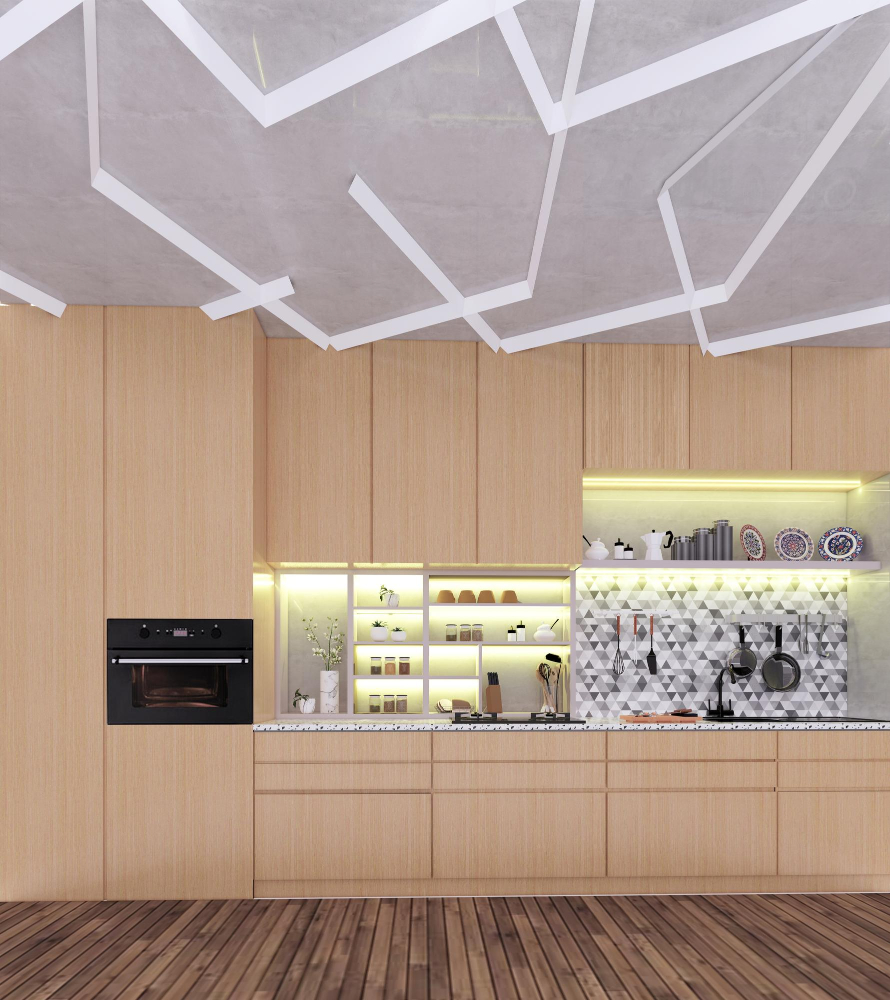
Strip lights provide a continuous line of light that covers a larger area, making them ideal for longer cabinets or countertops. They also offer more uniform illumination with fewer shadows than puck lights.
On the other hand, puck lights create pools of focused light that can be directed exactly where you need it most. This makes them perfect for highlighting specific areas such as workspaces or decorative features on your countertop.
Ultimately, the choice between strip lights and puck lights will depend on your personal preferences and needs in terms of lighting coverage and distribution in your space.
Energy Efficiency Comparison

Strip lights are typically more efficient because they use fewer bulbs to cover a larger area. This means that you can achieve the same level of brightness with less power consumption compared to puck lights.
On the other hand, puck lights are designed for directional lighting which makes them ideal for task lighting in specific areas such as above a sink or stove. They also come in LED options which consume less energy than traditional halogen bulbs used by strip light fixtures.
Aesthetic Appeal & Design Options
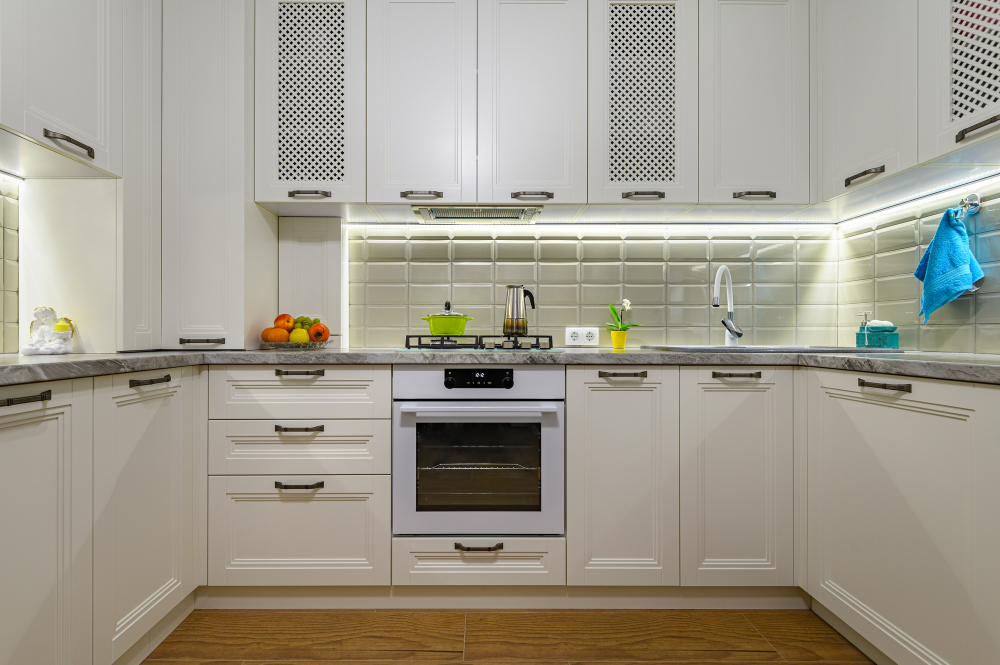
Both strip lights and puck lights come in various designs and finishes that can complement any decor style. Strip lights are available in different lengths, colors, and brightness levels to suit your specific needs.
They offer a sleek look when installed flush with the underside of cabinets or hidden behind molding.
On the other hand, puck lights provide more focused illumination on specific areas such as countertops or backsplashes. They come in round or square shapes with varying sizes that can be recessed into cabinets for a seamless appearance.
In terms of design options, both strip lights and puck lights have customizable features such as dimming capabilities and color temperature adjustments to create ambiance according to your preference.
Ultimately, choosing between strip light vs.
Cost Analysis

So, let’s talk about the cost analysis of strip lights vs. Puck lights for under-cabinet lighting.
Strip lights are generally more expensive than puck lights upfront due to their longer length and higher wattage capacity. However, they can cover a larger area with fewer fixtures which may save you money in the long run on installation costs.
On the other hand, puck lights are typically less expensive per fixture but require more units to achieve adequate coverage and brightness levels. This means that while they may be cheaper initially, you could end up spending more overall when purchasing multiple units.
Ultimately your decision will depend on your budget and specific lighting needs for your space.
Customization and Control Features
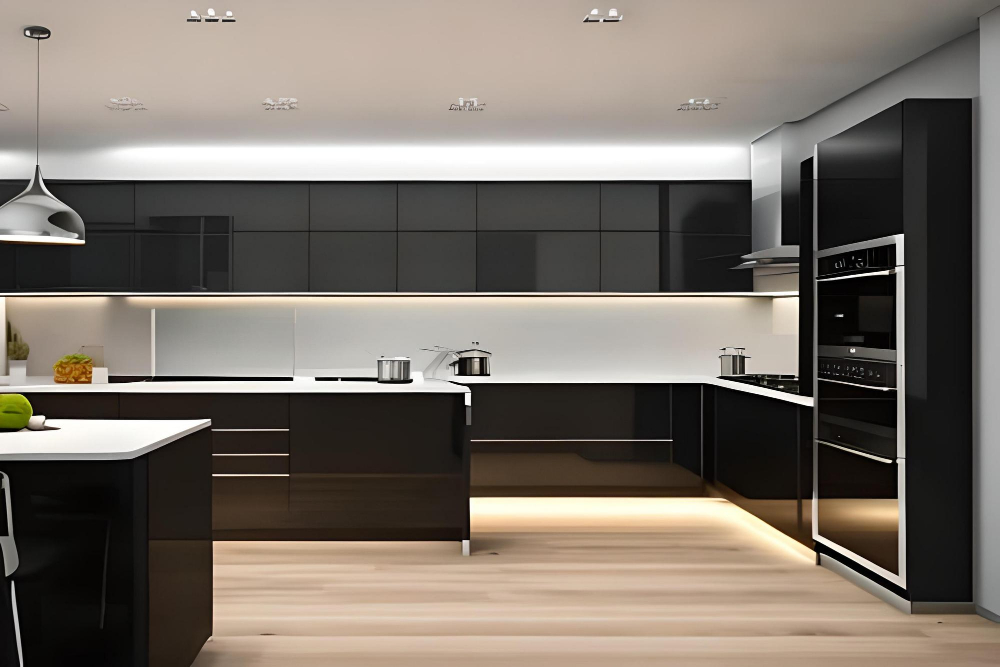
Strip lights come in various lengths that can be cut to fit any space, making them highly customizable. Many strip light models offer color-changing options and dimming capabilities that allow you to adjust the ambiance of your space with ease.
Puck lights typically do not offer as much flexibility when it comes to customization or control features. However, some newer models now include remote controls for adjusting brightness levels or changing colors.
Ultimately, the level of customization and control you need will depend on your personal preferences and how you plan on using your under-cabinet lighting. If versatility is important for creating different moods in your kitchen or bathroom area then strip lighting may be a better choice.
However, if simplicity is what matters most then puck lighting could still work well for certain spaces where less functionality is needed.




